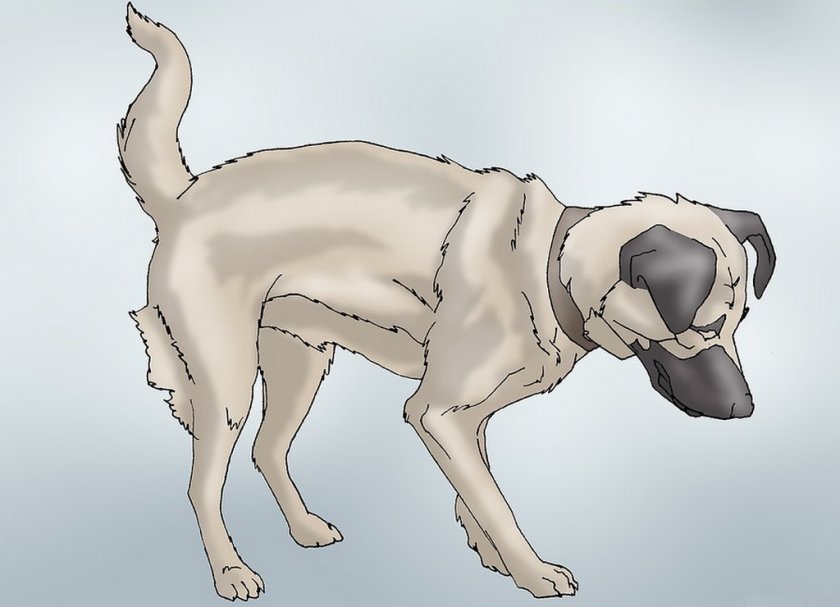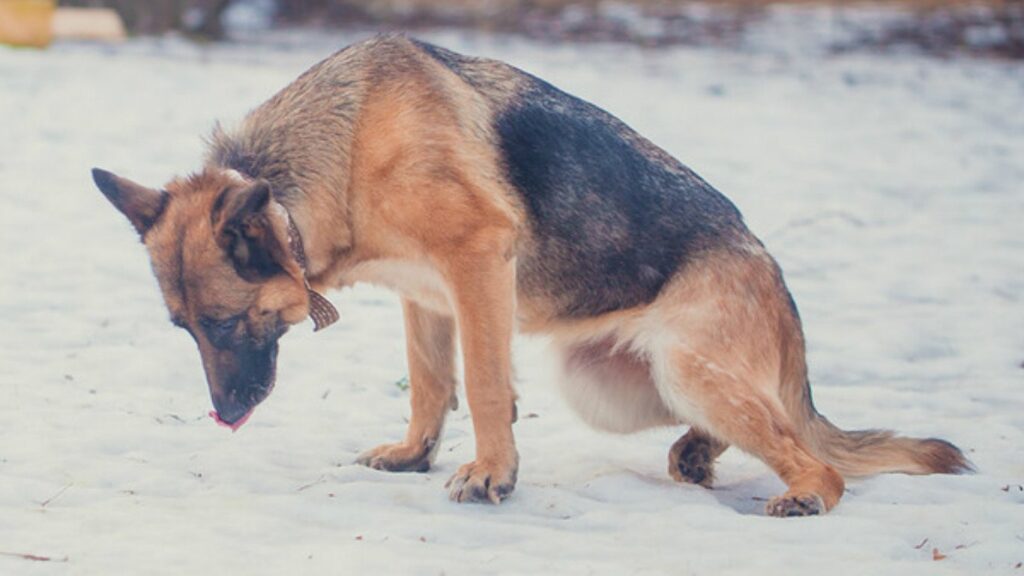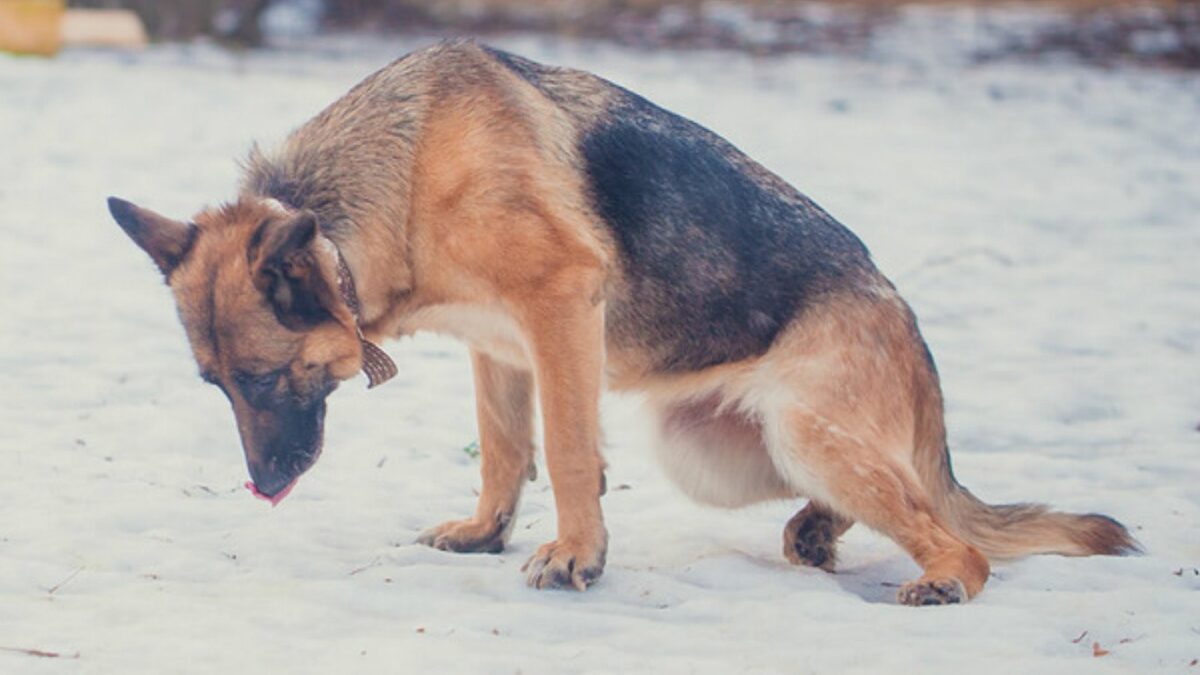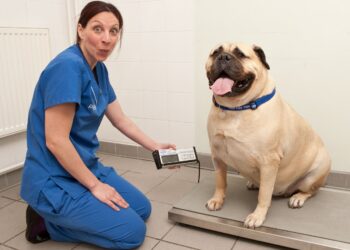Discovered in 1935, hip dysplasia in dogs is widely considered the most frequently diagnosed orthopedic condition in dogs. This issue is predominantly observed in larger breeds, especially those classified as large or giant, and it follows a complex polygenic mode of inheritance with a relatively low heritability.
What is Hip Dysplasia in Dogs?
Hip dysplasia is a common orthopedic condition in dogs that affects the hip joint. As an expert animal therapist, vet, and pet blogger, I’ll provide you with a comprehensive guide to understanding this condition, covering everything from its early signs to the final stages, the duration of the ailment, and the potential causes.
Early Signs of Hip Dysplasia in Dogs
Identifying hip dysplasia in its early stages is crucial for effective management. As an experienced animal therapist and vet, I want pet owners to be aware of the following early signs:
- Limping or Favoring a Leg: Dogs with hip dysplasia may exhibit a noticeable limp or show a preference for using one leg over another.
- Decreased Activity: A reduction in overall activity levels or reluctance to participate in physical activities, such as running or playing, can be an early indicator.
- Difficulty Rising: Dogs may experience difficulty getting up from a sitting or lying position, particularly after rest.
- Audible Clicking or Popping Sounds: Hip dysplasia can sometimes be associated with audible sounds coming from the hip joint, indicating discomfort or instability.
Early detection of these signs allows for timely intervention and can significantly improve the quality of life for dogs affected by hip dysplasia.
Final Stages of Hip Dysplasia in Dogs
In the advanced stages of hip dysplasia, the symptoms become more pronounced. This hip dysplasia skeletal disease in dogs can lead to significant discomfort for affected animals. Pet owners should be aware of the following indicators:
- Severe Pain: Dogs may experience intense pain, even during routine activities like walking.
- Muscle Atrophy: Muscles surrounding the hip joint may begin to waste away due to lack of use.
- Loss of Mobility: Mobility becomes severely compromised, with dogs struggling to perform basic movements.
- Visible Changes in Gait: The gait may become markedly altered, with a noticeable sway or instability.
Understanding the progression of hip dysplasia is crucial for making informed decisions about treatment options and ensuring the best possible care for affected dogs.
In the advanced stages of hip dysplasia, the symptoms become more pronounced. Pet owners should be mindful of the following indicators:
- Severe Pain: Dogs may endure intense pain, even during routine activities like walking.
- Muscle Atrophy: Muscles surrounding the hip joint may start wasting away due to lack of use.
- Loss of Mobility: Mobility becomes severely compromised, with dogs struggling to execute basic movements.
- Visible Changes in Gait: The gait may undergo marked alterations, displaying a noticeable sway or instability.
Understanding the progression of hip dysplasia is crucial for making informed decisions about treatment options and ensuring the best possible care for dogs affected by this skeletal disease.
How Long Does Hip Dysplasia Last in Dogs?
The lifespan of a dog with hip dysplasia depends on various factors, but with proper care, many can live a normal lifespan.

What Causes Hip Dysplasia in Dogs?
The development of hip dysplasia is influenced by a combination of genetic and environmental factors. Some key contributors include:
- Genetics: Certain breeds are more predisposed to hip dysplasia, and a genetic predisposition can increase the likelihood of its development.
- Nutrition: Improper nutrition during a dog’s growth stages may contribute to the development of hip dysplasia.
- Excessive Growth Rates: Rapid growth in large breeds can lead to an imbalance in the development of bones and joints, increasing the risk of hip dysplasia.
- Joint laxity: Abnormal laxity in the hip joint, often present from a young age, can contribute to the development of hip dysplasia.
As an advocate for pet health and well-being, I emphasize the importance of regular veterinary check-ups, especially for breeds prone to hip dysplasia, to detect and address potential issues early on.
Age of Onset for Hip Dysplasia in Dogs
Understanding when hip dysplasia typically manifests in dogs is crucial for early detection and intervention.
The age of onset for hip dysplasia in dogs can vary, but it commonly appears between 4 months and 1 year of age.
Arthritis and Hip Dysplasia in Dogs
Arthritis and hip dysplasia are common conditions that affect dogs, particularly as they age. Arthritis is the result of joint inflammation, leading to pain, stiffness, and reduced mobility. On the other hand, hip dysplasia is a genetic condition where the hip joint doesn’t develop properly, causing abnormal wear and tear and eventually leading to arthritis.
Early detection and proper management are crucial in providing relief and improving the quality of life for dogs suffering from these conditions.
How to Prevent Hip Dysplasia in Dogs
To prevent hip dysplasia in dogs, it is crucial to consider the age of onset. By implementing preventive measures early on, such as
- Proper nutrition
- Regular exercise
- Maintaining a healthy weight,
You can significantly reduce the risk of hip dysplasia developing in your furry companion. Taking proactive steps during the crucial growth stages can make all the difference in ensuring your dog’s long-term hip health.
Best Exercises for Dogs with Hip Dysplasia
Maintaining an active lifestyle is essential for dogs with hip dysplasia.
When addressing hip dysplasia in dogs, incorporating suitable exercises is crucial for maintaining mobility and overall well-being. Here’s a medium-range answer that includes a list of exercises along with brief explanations:
1. Swimming
Swimming is an excellent low-impact exercise that provides a full-body workout without putting excessive strain on the joints. It helps improve muscle strength and range of motion.
2. Leash Walking
Controlled leash walking allows for moderate exercise without the high-impact stress associated with activities like running. Ensure a steady pace to encourage gentle movement.
3. Gentle Stretches
Incorporate gentle stretching exercises to enhance flexibility. Focus on stretching the hip and thigh muscles to alleviate stiffness and improve joint function.
4. Canine Physical Therapy Exercises
Work with a canine physical therapist to develop a customized exercise plan. Therapeutic exercises can target specific muscle groups, aiding in overall joint support.
5. Low-Impact Fetch
Engage in low-impact fetch sessions using a soft ball or toy. This controlled activity promotes movement without causing excessive stress on the hip joints.
6. Hill Walking
Walking on gentle inclines helps build muscle strength in the hindquarters. Ensure a gradual slope and monitor your dog’s comfort level during the walk.
7. Balancing Exercises
Incorporate simple balance exercises, such as having your dog stand on uneven surfaces. These exercises can improve proprioception and stability.
8. Cavaletti Poles
Set up cavaletti poles at a low height to encourage your dog to lift their limbs, promoting joint flexibility and coordination.
Remember, before starting any exercise routine, consult with your veterinarian to ensure that the chosen activities are suitable for your dog’s individual condition.
Best Food for Dogs with Hip Dysplasia
Diet plays a crucial role in managing hip dysplasia. Selecting the right food for dogs with hip dysplasia is crucial to support their joint health and overall well-being. Here’s a guide to the best types of food for dogs dealing with hip dysplasia:
1. High-Quality Joint Supplements
Look for dog foods that contain essential joint supplements such as glucosamine and chondroitin. These compounds support joint health and can help manage the symptoms of hip dysplasia.
2. Omega-3 Fatty Acids
Foods rich in omega-3 fatty acids, such as fish oil or flaxseed oil, can have anti-inflammatory properties, providing relief for dogs with hip dysplasia. These fatty acids contribute to joint health and mobility.
3. Protein-Rich Diet
Opt for a high-quality, protein-rich diet to support muscle maintenance and overall health. Adequate protein is essential for the development and maintenance of strong muscles, which can help stabilize joints affected by hip dysplasia.
4. Balanced Nutrition
Ensure that the dog food provides a balanced and complete diet. This includes essential vitamins and minerals to support overall health, including the skeletal system.
Best Natural Remedies for Dogs with Hip Dysplasia
Natural remedies can complement traditional treatments for dogs with hip dysplasia, providing additional support for joint health and overall well-being. Here are some of the best natural remedies:
Fish Oil
Rich in omega-3 fatty acids, fish oil has anti-inflammatory properties that can help reduce joint pain and stiffness associated with hip dysplasia. It supports overall joint health and can be administered through capsules or by adding fish oil to the dog’s food.
Turmeric
The active compound in turmeric, curcumin, has natural anti-inflammatory properties. Adding turmeric to your dog’s diet may help alleviate pain and inflammation associated with hip dysplasia. You can mix turmeric powder with a small amount of dog-friendly oil and add it to their food.
Glucosamine and Chondroitin
These natural compounds are building blocks for cartilage and can help support joint health. Many natural joint supplements for dogs contain glucosamine and chondroitin, which can be given as treats or added to their food.
Bone Broth
Homemade bone broth is rich in nutrients that support joint health, including collagen, glucosamine, and amino acids. It can be a tasty and nourishing addition to your dog’s diet, promoting joint lubrication and reducing inflammation.
Methylsulfonylmethane (MSM)
MSM is a naturally occurring sulfur compound known for its anti-inflammatory properties. It can support joint function and may help reduce pain associated with hip dysplasia. MSM supplements are available in various forms, including capsules or powders.
Devil’s Claw
Devil’s Claw is an herb with anti-inflammatory properties that can aid in reducing pain and discomfort in dogs with hip dysplasia. It’s available in supplement form, and the dosage should be determined based on your dog’s size and weight.
Boswellia
Boswellia, also known as Indian frankincense, has anti-inflammatory effects that may benefit dogs with hip dysplasia. It’s available in supplement form and can be a natural alternative to manage joint pain.
Before introducing any natural remedies, it’s crucial to consult with a veterinarian. They can provide guidance on appropriate dosages, potential interactions with medications, and ensure that the chosen remedies align with your dog’s specific health needs. Natural remedies should complement, not replace, veterinary care for dogs with hip dysplasia.
Best Supplements for Dogs with Hip Dysplasia
Supplements can be valuable additions to a dog’s treatment plan for hip dysplasia. Here are the best supplements for dogs with hip dysplasia that can help alleviate their discomfort and improve their mobility:
- Glucosamine: Known for its joint-supporting properties, glucosamine can reduce inflammation and promote healthy cartilage in your dog’s hips.
- Omega-3 Fatty Acids: These essential fatty acids have anti-inflammatory effects and can support joint health, reducing pain associated with hip dysplasia.
- Chondroitin: Chondroitin supplements can help improve joint function and mobility by promoting the production of healthy cartilage.
Consider adding these supplements to your dog’s diet to provide them with the support they need for a happier, more active life.
FAQs
How long can a dog live with hip dysplasia?
The lifespan of a dog with hip dysplasia can vary depending on factors such as the severity of the condition, the dog’s overall health, and the management strategies in place.
What are the symptoms of hip dysplasia in dogs?
Common symptoms of hip dysplasia in dogs include
- limping
- Difficulty rising
- Decreased activity
- Reluctance to climb stairs
- A bunny-hop gait
- Audible clicking
- Popping sounds from the hip joint
- Muscle atrophy in the hindquarters
Is it OK to walk a dog with hip dysplasia?
Moderate, controlled exercise is generally beneficial for dogs with hip dysplasia. Walking on even surfaces and avoiding strenuous activities can help maintain muscle tone and joint flexibility. However, it’s crucial to consult with a veterinarian to determine the appropriate exercise routine for each individual dog.
Can anything be done for hip dysplasia in dogs?
Yes, several treatment options are available for hip dysplasia in dogs. These may include medication for pain and inflammation, weight management, physical therapy, joint supplements, and in severe cases, surgical interventions such as hip replacement or joint denervation.
When should I euthanize my dog with hip dysplasia?
The decision to euthanize a dog with hip dysplasia depends on factors such as the dog’s overall quality of life, response to treatment, and the extent of pain or disability. It’s a difficult decision that should be made in consultation with a veterinarian, considering the individual circumstances and well-being of the dog.
How much does it cost to fix hip dysplasia in dogs?
The cost of treating hip dysplasia can vary widely based on factors such as the chosen treatment option, geographic location, and the severity of the condition.
Conservative management, including medications and supplements, may be less expensive than surgical interventions, which can range from a few hundred to several thousand dollars.
What worsens hip dysplasia in dogs?
Factors that can worsen hip dysplasia in dogs include
- Obesity
- Rapid growth in large breeds
- Inadequate nutrition during the developmental stages
Genetics also play a role in the development and progression of hip dysplasia.
Are dogs with hip dysplasia in pain?
Yes, dogs with hip dysplasia can experience pain and discomfort, especially during activities that put stress on the hip joints. Chronic pain may lead to changes in behavior, such as reduced activity, difficulty rising, and signs of irritability.
What not to do with a dog with hip dysplasia?
Avoid activities that put excessive strain on the hips, such as high-impact exercise or activities that involve jumping.
Additionally, it’s crucial not to ignore signs of pain or discomfort and to consult with a veterinarian before implementing any treatment or exercise plan.
What can be mistaken for hip dysplasia?
Conditions such as arthritis, spinal issues, and muscle injuries can present symptoms similar to hip dysplasia. Accurate diagnosis by a veterinarian, often through imaging techniques like X-rays, is essential to differentiate and treat the specific condition.
What are the final stages of hip dysplasia in dogs?
In the final stages of hip dysplasia, dogs may experience severe pain, muscle atrophy, loss of mobility, and significant changes in gait. The condition may significantly impact their quality of life, and decisions about care and treatment become critical.
What dog breed is hip dysplasia common in?
Hip dysplasia is more commonly seen in larger dog breeds, including but not limited to
- Labrador Retrievers
- German Shepherds
- Golden Retrievers
- Great Danes.
However, it can affect dogs of any size or breed. Genetic factors play a significant role in its occurrence.

Wrapping Up
In conclusion, preventing hip dysplasia in dogs requires a comprehensive approach that includes proper exercise, balanced nutrition, and targeted remedies. By incorporating regular low-impact exercises, such as swimming and controlled walks, pet owners can strengthen their dog’s hip muscles and promote joint health. Take action today and comment on the blog post to share your experiences or ask any questions you may have. Together, let’s ensure our dogs live their lives free from the discomfort of hip dysplasia.
Related Articles:












